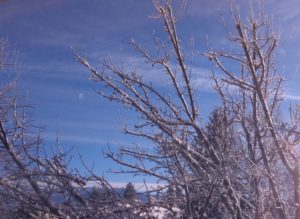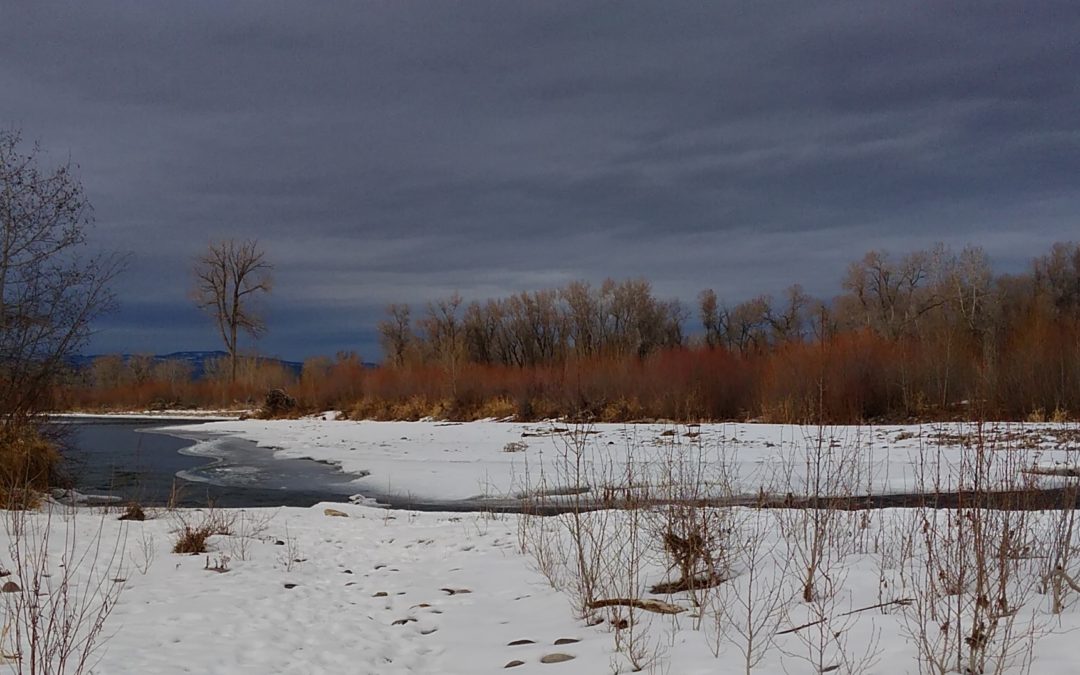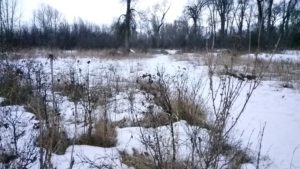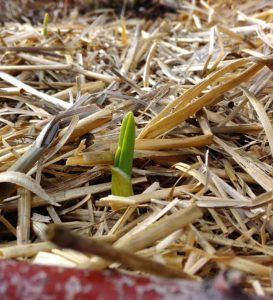It hasn’t been the prettiest Autumn. Bitter cold—well below freezing—in early October, many trees hadn’t even lost their leaves yet when everything froze solid in shades of brown and gray. After that abrupt halt to our growing season, the deciduous trees and bushes are certainly dormant now.
This is a season of transition for the plants, and for me too. Summer and harvest months are so physically active, such a whirl and rush to plant, thin, prune, harvest, tend, water, and weed. And weed some more. Then I cut back the warm-loving annuals that perish in the first light frost. I continue tending and harvesting hoop house plants. Then it gets too cold even for the hoop house. Lately I’m down to the odds and ends tasks: I harvest dry seeds so I have something to plant next spring. As I walk among all the dry wilted stalks, clipping off seed pods and wilted flower heads here and there—that’s when I know the gardening season is over.
Dormancy. But something else is simultaneously entering its own spring.
The energy shifts. I’m doing less and pondering more. While summer is my outwardly active season, it is a time when my writing self turns dormant. Not dead mind you. Dormant.
* * *
I recently learned that trees in their dormant state are actually quite active. Up top all is still and static. But down underneath, serious work is happening. Just as people cannot live without a healthy microbial community in their guts, trees cannot thrive without strong symbiotic relationships with fungi in the soil. The tree exudes carbohydrate food for the fungi and the fungi, through their miles long mycorrhizal networks, transfer and package trace nutrients for the tree.
That work does not cease in the winter. It continues, albeit at a slower pace. Though a series of mid-winter warm days can accelerate the activity. Whatever the rate, this subterranean winter work is vital to ensure the tree has diverse nutritional reserves in time for the rush of growth in spring. Fascinating!
 Maybe that’s exactly what happens to my writing self during summer months. It’s not that I cease writing. I do keep short entry journals, and I jot away in my pocket-sized mini notebooks—lots of partial thoughts, themes, new scene ideas, interesting statistics. All those scraps get tucked into their relevant project files. Those files now swell with bits and bobs of story-writing fuel. They’re the nutrient pods that I’ll draw upon during writer’s springtime.
Maybe that’s exactly what happens to my writing self during summer months. It’s not that I cease writing. I do keep short entry journals, and I jot away in my pocket-sized mini notebooks—lots of partial thoughts, themes, new scene ideas, interesting statistics. All those scraps get tucked into their relevant project files. Those files now swell with bits and bobs of story-writing fuel. They’re the nutrient pods that I’ll draw upon during writer’s springtime.
Meaning now.
The files and reams are just beginning to leaf out and ask for attention. I fan the materials out across a table. “Well hello there,” I say. “What shall we grow this year?” I’m not quite writing yet, but I am sketching lots of structural trellises, re-reading last year’s drafts and all those more recent mini-notebook scraps. Mulling, tilling, rooting. Sprouting.
How about you? Does your writing life have a seasonality to it? Have you ever felt like you needed to fight that? Do things work better if you embrace it?
Learn more about winter trees:
Brundrett MC, Kendrick B. “The mycorrhizal status, root anatomy, and phenology of plants in a sugar maple forest.” Canadian Journal of Botany. 66(6): 1153-1173. https://doi.org/10.1139/b88-166
Snyder M. “What do Tree Roots do in Winter?” Northern Woodlands. Winter 2007. https://northernwoodlands.org/articles/article/what_do_tree_roots_do_in_winter
“Mycorrhizae: My Favorite Kind of Fungi” Arborist Now Urban Forestry. May 19, 2016. https://www.arboristnow.com/news/mycorrhizae-my-favorite-kind-of-fungi



